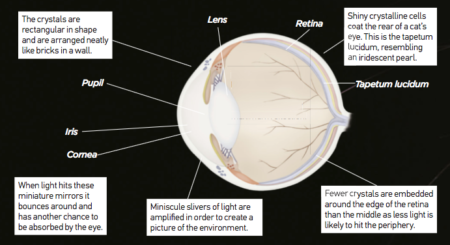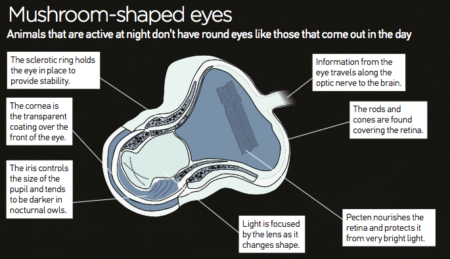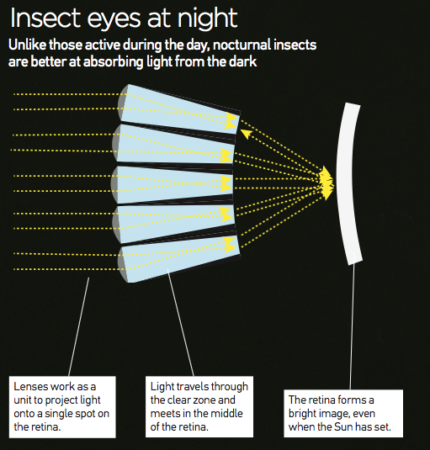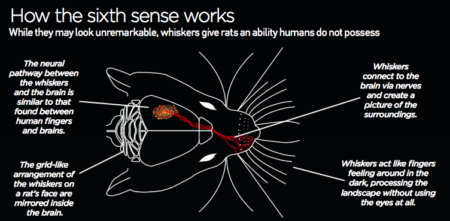How animals see in the dark
Whether you’re a carnivore skulking through the undergrowth in the dead of night or a prey animal trying to survive until sunrise, night vision is a matter of life or death in the unforgiving wild
Cats
Cats can see with one-sixth of the light humans need
There are two types of light-sensitive cells in the eyes. Cones are responsible for colour vision and require a lot of illumination to work, while rods can’t pick out colour but function in extremely dim conditions. Human eyes contain around 120 million rods, but cats have up to eight times as many. This creates super-charged night vision abilities that allow cats to sense their surroundings with a fraction of the light required by the human eye.
Rods are also responsible for peripheral vision due to their positioning around the outer edge of the retina. Additionally, low-light rod cells are the eye’s most sensitive motion sensors and notice miniscule movements in the dark. Cats use their expanded field of vision and finely tuned motion detection to snare prey that a human wouldn’t even notice.

Owls
Owl eyes are huge but can’t move
Accounting for roughly five per cent of the bird’s weight, the eyes of an owl are around 250-times larger than those of a human in relation to their body size. The cornea and pupil are enlarged to let in as much light as possible as most owls are nocturnal. Their eyes have very few colour- detecting cone cells but a huge array of low-light rods. Owls are able to see very clearly over long distances but struggle to detect objects very close to the eyes. They are adapted for hunting small prey from the air throughout the night.
Even though the eyes are highly specialised to work well in the dark, owls cannot move them in any direction. They are held in place by bony structures called sclerotic rings, fixed looking straight ahead. This is why owls are able to turn their necks as far as 270 degrees in either direction.

Elephant hawk moth
Elephant hawk moths can see colour by starlight
Light receptors in this insect’s eye obtain three orders of magnitude more light than bees can. That’s the difference between the light of the full Moon and the glow of the stars alone. A large lens and a short distance to the colour receptors brings in enough illumination for the moth to see blue, yellow and ultraviolet (UV) light, even when the Moon is not out.
The elephant hawk moth feeds from tubular flowers like honeysuckle and needs to be able to see its food during the night. Its low-light colour detection skills help the moth find flowers as easily as butterflies do in the daytime. Flowers and leaves absorb UV light, which is outside of the visible spectrum of humans. Petals glow like a black- light poster, advertising their nectar to pollinating insects and helping spread their pollen around the area.

Rat
Rat whiskers sense the shape of the environment
When it comes to getting around, whiskers are vital for rats. The hairs protruding from their muzzle are so sensitive they can identify objects and detect changes in air flow in the absence of light. Under laboratory conditions rats are able to tell the difference between rough and smooth sandpaper by touching it with their whiskers.
The long fibres are constantly waved back and forth at high speed. This is called active whisking, and the motion of the hairs picks up movement of air particles that could be caused by a prowling predator. This behaviour is so important that baby rats learn how to do it after only 12 days of life. Each whisker sprouts from a blood- filled follicle, and movement of the hair alters the pressure of the blood inside. This triggers a signal to the brain that tells the rat the degree to which the whisker has moved and in which direction.

This article was originally published in World of Animals issue 65, written by Amy Grisdale
For more science and technology articles, pick up the latest copy of How It Works from all good retailers or from our website now. If you have a tablet or smartphone, you can also download the digital version onto your iOS or Android device. To make sure you never miss an issue of How It Works magazine, subscribe today!





